Biblical prophets are difficult to demonstrate through archaeology. They usually did not hold governmental offices, thus they didn’t have much of the regalia, stamps and correspondence preserved as kings and princes did. They did not build cities. More often than not, as relayed in the biblical account, the ruling classes hated them—the authorities were more willing to be rid of them and their evidence. And many prophets were simply of humble occupations. Yet their preserved biblical texts live on as some of the most precious writings we have. Archaeology has verified many of the figures they describe, along with their accurate regional assessments. But on a personal level, they are unsurprisingly more difficult to identify archaeologically.
Such is the case with the Prophet Elisha. He was a farmer before he was called to follow the Prophet Elijah. While we don’t have a specific book of the Bible written by him, we do have a detailed account of him in the book of Kings. Yet the details of his life, as described in the Bible, have been remarkably filled out by archaeological discovery. An artifact has even been found that quite possibly bears his name.
Science is uncovering not only mere snippets of the Bible, but entire stories. As with our previous articles on notable biblical individuals, we now examine in-depth the Prophet Elisha.
An Excavation, a Name
Excavations at the large biblical city of Tel Rehov had taken place for 16 years. The site’s director, Prof. Amihai Mazar, had successfully led his team in making a number of significant discoveries. In 2013, there was another particularly special find.
A couple of pottery fragments were discovered with ancient text written on them in red ink. The fragments, along with the layer in which they were found, dated to the middle of the ninth century b.c.e. The ancient Hebrew script was damaged, yet still could be translated with near certainty as the name “Elisha.”
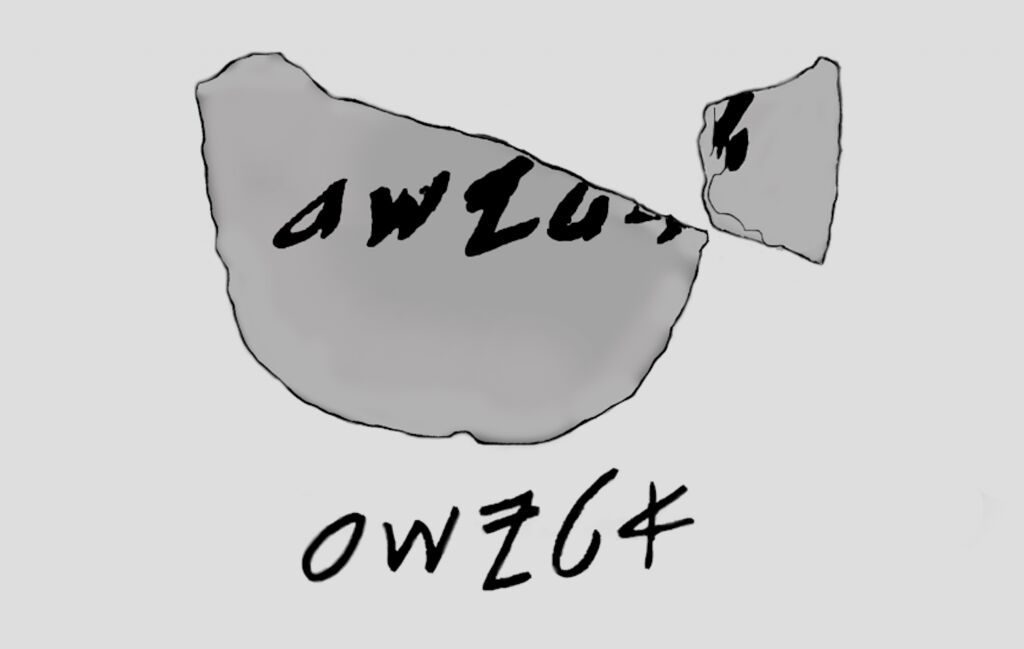
The text is interesting for a number of reasons. Not only does the name parallel the biblical prophet, it also dates to the same time period that he lived. And it was found in an area where he spent much of his time—he was born only seven miles away in a town named Abel-Meholah. The Bible states that Elisha spent so much time around this area that a couple living in nearby Shunem were inspired to make a chamber in their house for him (2 Kings 4).
Adding to the evidence connecting this inscription to the prophet, an inscription bearing the name “Nimshi” was also found (as well as another Nimshi inscription roughly five miles away). Elisha told one of his disciples to go and ordain Jehu, grandson of Nimshi, to be king. So this name had significance to Elisha’s record. Then there is the fact that, based on current knowledge, the name “Elisha” was quite rare in ancient Israel.
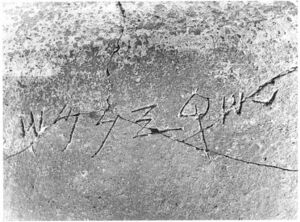
The house itself, within which the name was found, was quite interesting. It had a slightly unusual design for normal houses of the period. It was divided into two wings, with two entrances from the street (as opposed to one entrance and one central room). It was thus a more publicly accessible building. Furthermore, large vessels were found, larger than would be expected for family use. Perhaps this building served as a more communal area—maybe as a gathering place for Elisha’s disciples.
Of course, we don’t yet have enough proof to say outright that this inked “Elisha” referred to the prophet. However, the evidence is compelling. Hopefully further discoveries will help clarify this remarkable inscription.
(A further point of interest: Nearby at Tel Rehov, the oldest identified beehives in the Near East were found. They date from the mid-10th century to early-ninth century b.c.e. Thirty hives were found intact, along with many more damaged hives. The bee species that was “farmed” can only be found in Turkey today. They have a much higher honey yield than Israelite bees and were likely imported to Rehov. Ancient records show that the Assyrians imported bees from Turkey.)
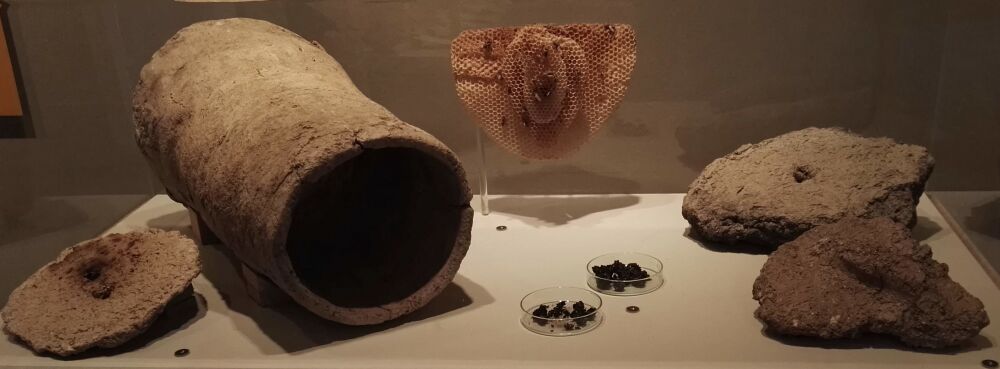
Elisha’s Beginnings
As stated above, Elisha was born in Abel-Meholah and grew up to become a farmer. The Prophet Elijah at that time had been on the run, suffering heavy persecution from the evil Queen Jezebel, wife of Israelite King Ahab. We must stop here to discuss another artifact.
A large royal seal stamp, covered with foreign and pagan motifs, has come to light from a private collection (now kept at the Israel Museum). The seal bears the name “Jezebel” (albeit missing the first letter and “belonging to” attribution, which appears to have been part of the broken section—read our article on the subject here). While this seal stamp was not discovered through scientific excavation, there is no good reason to doubt its authenticity. The royal seal—displaying typical female attributes, motifs and name—almost certainly belonged to this infamous wife of King Ahab.
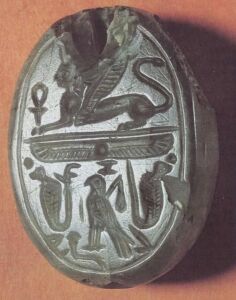
Although Elijah was on the run from this powerful woman, Jezebel herself was about to face a gruesome death. First, though, God comforted Elijah, speaking to him from Mount Sinai (1 Kings 19). He was to find and anoint Elisha of Abel-meholah to take his place as prophet. And he was comforted to know that 7,000 Israelites had remained faithful to the true God, rather than following after Jezebel’s paganism.
Elijah found Elisha plowing a field behind a long line of oxen. He symbolically threw his mantle (robe) over Elisha, who recognized right away what was taking place. Expecting to depart on his new calling immediately, Elisha asked if he might take time to say goodbye first to his mother and father. Elijah, taken aback by Elisha’s exuberance, was not intending to so hastily depart with the man. He allowed him to return to his family, where Elisha prepared a massive feast of several oxen. After which, he followed after Elijah (1 Kings 19:19-21).
Israel’s Political Situation
There is a break in the biblical story before Elisha reappears. During this time, the northern kingdom of Israel was engaged in successful battles against Ben-Hadad of Syria. King Ahab took Ben-Hadad captive, yet absurdly let him go free, an act prophesied to come back to bite Israel.
Later, there was the incident at Naboth’s vineyard, where Ahab was denied the illegal purchase of Naboth’s inherited land. Ahab’s wife, Jezebel, had Naboth brought before a kangaroo court on a false charge of blasphemy, and Naboth was stoned. Ahab moved in to possess his newly acquired vineyard—there the Prophet Elijah met him and cursed his family to an ignominious end for his bloody and unmerciful rule. Interestingly, evidence of an ancient vineyard at Jezreel, where Naboth’s biblical vineyard was located, has been found. A wine-stomping vat and runoff collection point, along with various basins, were discovered. These remains are difficult to date, yet seem to fit well into the time period up to and including when Naboth would have been on the scene (read our article on the discovery here). After the incident with Naboth, Ahab was killed in a battle with the Syrians, and his son Ahaziah took over the throne of Israel.
Before we leave King Ahab, we must make mention of the fact that he, too, has been confirmed by archaeology. The Kurkh Monolith—a stone monument belonging to King Shalmaneser iii of Assyria—describes a battle during the Israelite king’s reign, referring to him as “Ahab the Israelite.”

After reigning only two years, wicked King Ahaziah fell through a raised platform and gravely injured himself. While seeking healing from the Philistine god Baalzebub, Ahaziah sent several groups of men to forcibly bring Elijah to him. They failed, and Ahaziah’s 102 men were killed by fire from heaven. Elijah prophesied that Ahaziah would never leave his bed again (2 Kings 1). Shortly afterward, the king died, and his son Jehoram reigned in his place (easily confused with the king of Judah at the time, who was also named Jehoram).
The Syrian leader Ben-Hadad, as well as King Jehoram’s campaign against a Moabite ruler, will feature further down in the story (as well as in archaeological discoveries). First, though, the Prophet Elisha reappears.
The Whirlwind
It was common knowledge among the “sons of the prophets” that the Prophet Elijah would not be around much longer. There were at least two specific “schools” of the prophets described here, to which Elijah made his rounds (Bethel and Jericho). While advising his assistant Elisha to let him proceed in his journeys alone, Elisha refused. The two men went to Jordan, followed by 50 curious disciples. The waters of the Jordan miraculously parted for Elijah and Elisha.
Knowing he would soon depart, Elijah asked if Elisha had any final requests. Elisha responded by asking for double the portion of the Holy Spirit that Elijah had. This wasn’t something Elijah had the power to give, but he said that if Elisha saw him depart, then that would be the sign that his request had been granted.
As the men continued their journey, a flaming chariot suddenly appeared and swept Elijah up, carting him into the heavens by a whirlwind.
“My father, my father, the chariot of Israel, and the horsemen thereof!” cried Elisha, who had grown close to the prophet (2 Kings 2:12; King James Version). Elijah, while not dead (he later had correspondence with one of Israel’s kings), was now gone, possibly in a similar manner to what happened with Enoch (Genesis 5:24; also Hebrews 11:5). Elisha picked up Elijah’s fallen mantle and returned the way he had come, the waters of the Jordan River miraculously parting once again for him.
Now began a new phase, this time under the Prophet Elisha.
Miracles and Mesha
2 Kings 2 continues by describing a miracle done almost immediately through Elisha. A city in the region of Jericho, where Elisha was staying, had problems with a bad water source, making the land barren. The baffled locals looked on as Elisha poured a container of salt into the spring. “‘Thus saith the Lord: I have healed these waters; there shall not be from thence any more death or miscarrying.’ So the waters were healed unto this day, according to the word of Elisha which he spoke” (2 Kings 2:21-22). Jericho today, while categorized as a hot desert climate, still receives abundant quantities of spring water, which it relies on heavily for fertility.

Elisha then made his way back toward the other school of the prophets at Bethel. Along his journey, he was met by a mob of dozens of youths, who began slinging insults at him. Elisha cursed the adolescents, and immediately two bears emerged, attacking 42 of them (verses 23-24). Some may wonder how it was possible for bears to be roaming about Israel. Actually, bears still live in the wider Levant region to this day (although sightings are incredibly rare, due to poaching and habitat loss; they are believed to be extinct in Israel). Known as the Syrian brown bear, they are the smallest species of the brown bear family, yet can still weigh up to 250 kilograms (550 pounds).

At this point in time, Israel’s King Jehoram was wondering what to do about a rebellious king of Moab, named Mesha. King Mesha had paid tribute to Israel, yet after the death of Ahab, had rebelled (2 Kings 1:1; 3:4-5). An amazing Moabite discovery parallels this story—from King Mesha’s point of view. A black victory stone, known as the Mesha Stele, dating to this time period discussed in 2 Kings, was discovered. It celebrates a rebellion against the Israelites. It parallels several biblical details, including the mention of Moabite King Mesha, Israelite King Omri, the Moabite god Chemosh, and the God of Israel yhwh. It also confirms the tribe of Gad living in Ataroth, which had been previously occupied by the Moabites (as paralleled in Numbers 32:34 and Joshua 13). For more details on this remarkable artifact, see here and here.
King Jehoram, himself an evil ruler, decided to punish the Moabites for this rebellion. He gained the help of King Jehoshaphat of Judah as well as the king of Edom. After a full week of marching, the massive army ran out of water. Fearing destruction at the hands of the Moabites, King Jehoshaphat was urgent to find a true prophet to speak to God for them. Elisha was found among the men and brought forward. He stated that the mission would have been doomed were it not for the presence of the righteous King Jehoshaphat. He instructed the men to dig holes in the ground and prophesied that the Moabites would be defeated.
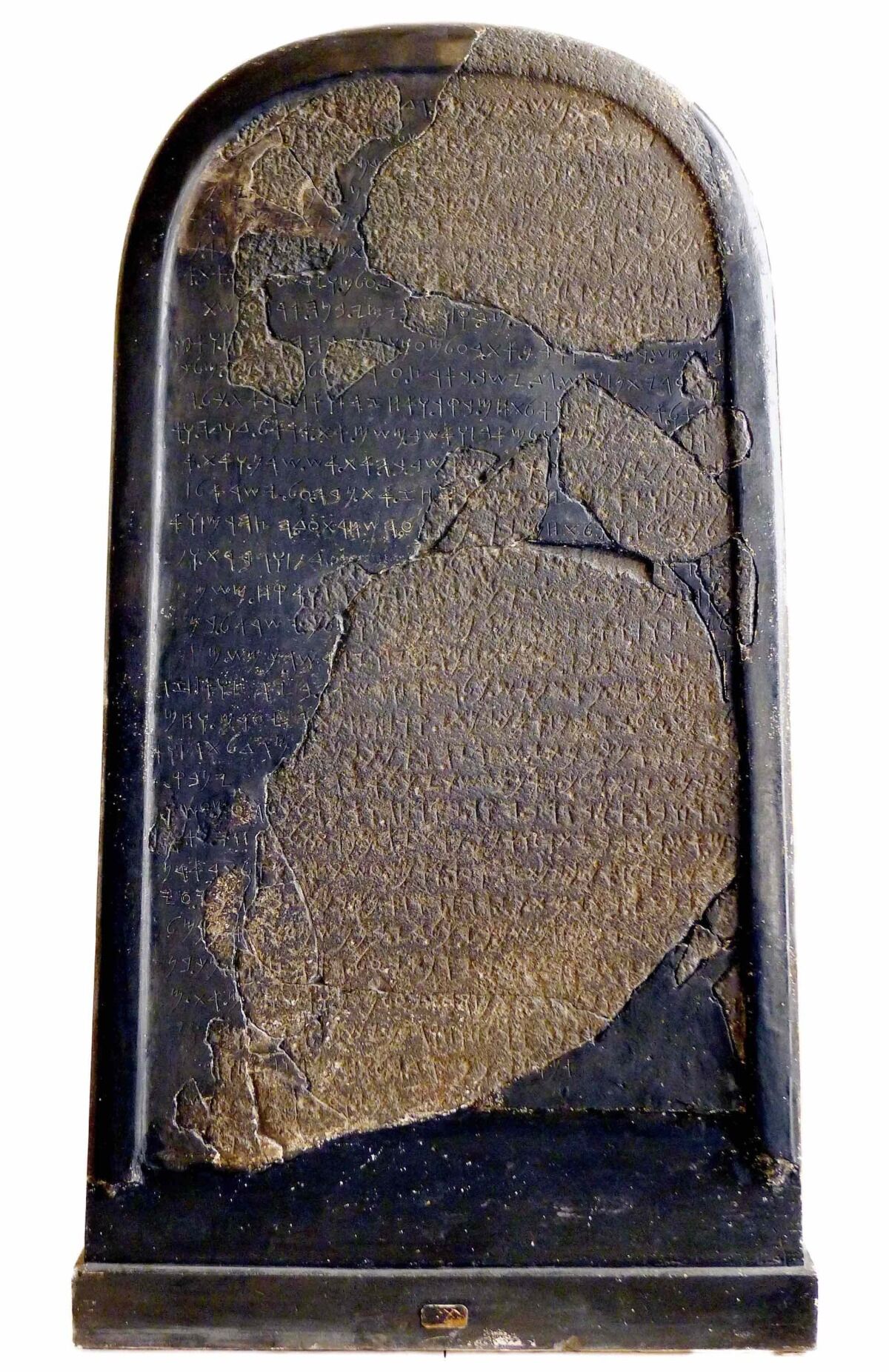
By the following morning, the holes were full of life-saving water. To the Moabite army in the distance, however, it appeared to be blood. Thinking that the armies of Israel, Judah and Edom had turned on one another, the Moabites rushed into the enemy camp. They were surprised to find the fully intact alliance present and ready to fight. The Moabites were utterly defeated.
Fleeing into a city, King Mesha took his eldest son and committed a horrible act: “Then he took his eldest son that should have reigned in his stead, and offered him for a burnt-offering upon the wall. And there came great wrath upon Israel; and they departed from him, and returned to their own land” (2 Kings 3:27).
Elisha’s Travels and Miracles
After the Moab episode, Elisha continued traveling around Israel. He came upon the wife of one of the sons of the prophets, whose husband had died. This woman was living in abject poverty with her two sons, who themselves were about to be taken by her creditor. All she had was a small jug of olive oil. Elisha advised the woman to collect as many containers as possible and begin pouring the oil into them. Miraculously, every container was filled. The woman was able to sell the oil and pay off her debt (2 Kings 4:1-7).
Another woman, living in Shunem, noticed the prophet frequently passing through the area. Recognizing him as a man of God, she and her husband prepared a small room for him to stay in and rest between journeys. In thanks for what this older, childless woman had done, Elisha prophesied that she and her husband would soon have a child. After many years had passed, their growing child was outside working in the heat with his father when he began to feel ill. After being carried inside, the boy died in his mother’s arms. She rushed to find Elisha and brought him to her house, where he prayed and began a resuscitation routine. Promptly, the boy was resurrected (verses 8-37).
The next miracle described was performed in Gilgal, where the sons of the prophets were preparing a meal. Unfortunately, one of the group unwittingly collected a poisonous item that was shredded into the soup. Elisha threw some meal into the pot, and the poison was immediately removed (verses 38-41). Another man brought a modest quantity of bread and corn, which Elisha commanded to be distributed to the 100 in attendance. Miraculously, there was enough to go around, with leftovers to spare (verses 42-44).
The next miracle involved the captain of the Syrian army, Naaman. Naaman had contracted leprosy. His wife’s servant, a young Israelite girl, recommended that he go see the prophet. Naaman went to meet Elisha, who sent his servant Gehazi to instruct him to wash seven times in the Jordan River. After initially refusing to comply with the unusual command, Naaman washed in the river and was surprised to find that his leprosy was immediately healed (2 Kings 5).
At another time, Elisha’s students requested permission to build a new lodging place. While cutting down trees for the structure, an ax head flew off the handle and into the Jordan River. This was particularly upsetting since it was a borrowed tool and probably quite expensive. Elisha threw a branch into the water, and to the amazement of the students, the iron ax head began to float (2 Kings 6:1-7).
War With Syria
Around 850 b.c.e., the king of Syria began attempting to stage attacks against Israel. But the Israelites were always aware of his plans every time he secretly sent out his troops. The king was certain that one of his men was conspiring with the enemy—until they told him that the Prophet Elisha was prophesying to the Israelite king of where Syria was about to attack. The king then sent a large Syrian army to the Israelite city of Dothan to arrest the prophet.
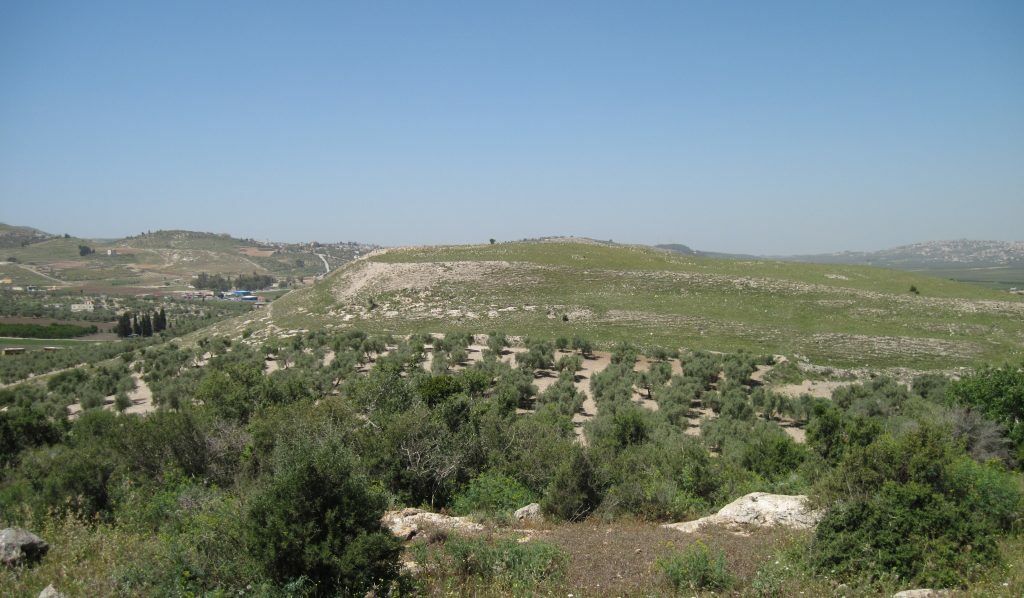
One morning, one of Elisha’s servants noticed the massive army circling the city. He fearfully cried out to his master. Elisha replied, “Fear not: for they that are with us are more than they that are with them” (2 Kings 6:16). He prayed that his servant would have the ability to see the spirit realm around him—and his servant’s eyes widened as he saw legions of fiery angelic chariots surrounding them in their defense.
Elisha prayed that God would blind the Syrians. After He did, the prophet led the army into Samaria before the king of Israel. Once in Samaria, the Syrians’ eyes were opened, and they realized that they had become captives. Elisha counseled the Israelite king to prepare provisions for the men and to allow them passage back into Syria. These bands never returned to Israel.
Syrian King Ben-Hadad later gathered another group of men and besieged Samaria. The resulting famine was so great that animal manure was sold at a high price for food and people even resorted to child-cannibalism (verses 24-29). Israel was paying a dear price for Ahab’s sin in letting the evil Ben-Hadad go free during their earlier battles.
This siege, however, would not defeat Israel. Elisha prophesied that food was about to become so plenteous in Israel that it would be sold for next to nothing. The following day, it was discovered that the Syrians had fled their tents, imagining they heard the approach of Egyptian and Hittite armies. The rich abundance of food they left behind was snatched up by the starving Israelites.
Syria’s King Ben-Hadad has been attested to by archaeology. He is mentioned on the Melqart Stele. Additionally, a number of Syrian kings bore the name Ben-Hadad (Bar-Hadad, in the native Aramean language). The name signifies “Son of Hadad”—Hadad being a pagan deity.
After the siege, Ben-Hadad fell ill. Word came to the king that Elisha was in Damascus. He sent his assistant, Hazael, to meet him and ask if he would recover. Hazael met with Elisha, bringing 40 camels’ worth of goods as a present. Elisha informed him that Ben-Hadad would recover, but that he would also soon die. Hazael was bewildered, as Elisha began to weep. “And Hazael said: ‘Why weepeth my lord?’ And he answered: ‘Because I know the evil that thou wilt do unto the children of Israel: their strongholds wilt thou set on fire, and their young men wilt thou slay with the sword, and wilt dash in pieces their little ones, and rip up their women with child’” (2 Kings 8:12).
Elisha informed Hazael that he would become the new king of Syria. Hazael returned to his master, and the following day smothered him, after which he installed himself on the throne.
Hazael likewise has been verified through archaeology. He is referred to in several inscriptions. Shalmaneser iii’s inscriptions refer to him as “Hazael of Damascus.” The eighth-century b.c.e. Zakkur Stele refers to him, as do various ivories and horse riding equipment.
Anointing of Jehu, Fall of Ahab’s Dynasty
Hazael sent his forces to Ramoth-gilead to battle Israel’s King Jehoram (who had participated in the victory against Moabite King Mesha). Rushing to Jehoram’s aid was Judah’s King Ahaziah. These two kings made a united stand against the Syrian army—one that would spell their doom. This ill-fated battle, mentioned in 2 Kings 8:28 through 2 Kings 9:28, is also documented on an artifact known as the Tel Dan Stele. This is a damaged victory stone celebrating the triumphs of the Syrian king; specifically, in this battle. The broken inscription reads, in part:
And I killed two [power]ful kin[gs], who harnessed two thou[sand cha]riots and two thousand horsemen. [I killed Jeho]ram son of [Ahab] king of Israel, and I killed [Ahaz]yahu son of [Joram kin]g of the House of David. And I set …
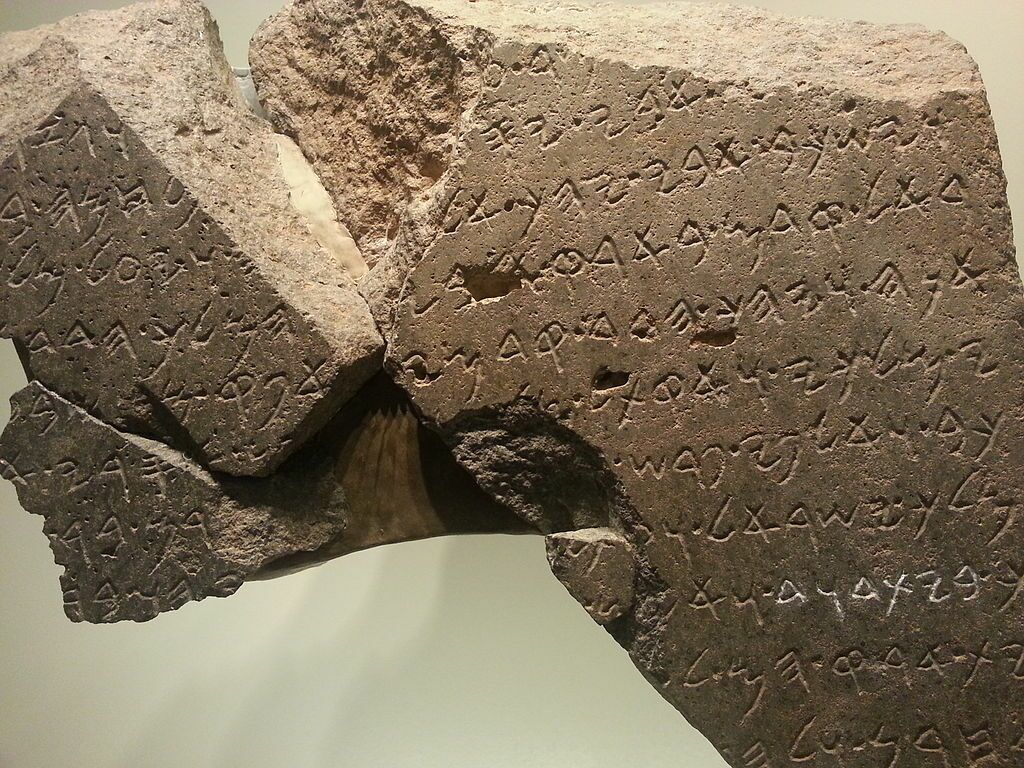
Kings Jehoram and Ahaziah were killed during, or soon after, this battle. Yet the circumstances of their deaths were not as simple as the boastful Syrian king made out on his inscription.
God had cursed the family of Ahab for their evil, oppressive legacy, and a new king was to be anointed to bring justice to Israel. Jehoram had been wounded in the battle against Hazael and had returned to Jezreel to recover. King Ahaziah joined him there. At this point, Elisha sent one of the sons of the prophets to the battlefield at Ramoth-gilead to anoint Jehu, son of Jehoshaphat, son of Nimshi, as king. As described above, “Nimshi” inscriptions were found not far from the “Elisha” inscription.
Elisha’s student anointed Jehu as king, and communicated to him the task of wiping out Ahab’s family to avenge the blood of the righteous who had been murdered. Jehu’s men immediately put their full support before the new king, who left immediately for Jezreel. There, he met and killed the recovering King Jehoram, along with Judah’s King Ahaziah (also a relative of Ahab). Jehoram’s body was thrown into Naboth’s field. Jehu then found Jezebel and had her thrown out of a window, where she was trampled over. Just as Elijah had prophesied, dogs devoured her battered body, leaving behind only the skull, hands and feet. Jehu then set about dispatching with the other members of Ahab’s family.
King Jehu is attested to archaeologically. He is mentioned on an inscription on one of the walls of Assur (dating to Shalmaneser iii’s time) as “Jehu, son [successor] of Omri.” He is also mentioned in the same manner on the Kurba’il Statue. Another famous artifact describing Jehu is the Black Obelisk, commemorating the triumphs of Shalmaneser iii. Along with a possible depiction of King Jehu kneeling, the inscription details the tribute offered by King Jehu.

Jehu also began a massive purge in Israel of idolatry. Pagan priests were slaughtered and items of worship were smashed. Among the destruction practices was something rather unusual: “And they broke down the pillar of Baal, and broke down the house of Baal, and made it a draught-house, unto this day” (2 Kings 10:27). Jehu installed a toilet in the house of Baal worship. This practice was backed by archaeology for the first time only last year. A toilet seat was found installed in a desecrated pagan room at Tel Lachish. While the Lachish destruction and installation dates to a later period (around the time of King Hezekiah’s reforms), the discovery certainly shows a precedent for this symbolic act.
King Jehu made a fantastic start in his leadership of Israel. Yet before long, he too joined the ranks of Israelite kings before (and after) him in turning to idolatry. As a result, King Hazael of Syria succeeded in wreaking havoc across Israel. After Jehu’s death, his son Jehoahaz reigned in his stead.
Jehoahaz, Joash and Elisha’s Death
King Jehoahaz continued in the Israelite royal tradition of disobedience to God. As a result, he suffered harshly at the hands of the Syrian King Hazael, and Hazael’s son, Ben-Hadad. This second Ben-Hadad has also been attested to archaeologically. Like his father, he is mentioned on the Zakkur Stele. And there is also another possible reference to him on an Assyrian inscription.
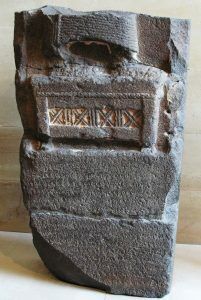
Israel’s pummeling was too much for Jehoahaz. Strangely, he called out to God for help, and his request was answered. Relief was given to the oppressed Israelites. By this point, all Jehoahaz had left were 50 horsemen, 10 chariots and 10,000 foot soldiers (2 Kings 13:1-9).
Jehoahaz died, and his son Joash reigned in his place. Like all the other rulers of the northern kingdom of Israel, he was also a rebellious king. He too is attested to archaeologically. The Stele of Adad-Nirari iii mentions him as “Joash of Samaria” and describes him as having paid tribute to the Assyrian king.
Despite Joash’s rebellion against God, there was at least one bright spot in his rule. At this point in time—around 800 b.c.e.—the elderly Elisha had fallen ill and was dying. Joash visited him and recited to him the very words that Elisha had used when the Prophet Elijah was taken up in the whirlwind: “O my father, my father, the chariot of Israel, and the horsemen thereof” (2 Kings 13:14; kjv). Elisha instructed the king to take a bow and shoot an arrow out the window. Elisha declared that this arrow symbolized God’s deliverance from Syrian oppression. Elisha then told Joash to smite the ground with a handful of arrows. This he did three times. Elisha told the king that this would symbolize the number of times Joash would smite the Syrians (verses 15-20, 25).
After this, the Prophet Elisha died. Thus ended the work of one of the truly great men of God to walk the Earth. But one more miracle would be performed through Elisha.
Sometime within a year of his death, Moabite bands began invading Israel. At the same time, a group of Israelites were busy burying a dead body. Noticing a marauding band in the distance, the Israelites hastily flung the corpse into the sepulcher and ran for their lives. The dead body came to rest on the interred bones of Elisha. Immediately, the dead man lurched back to life and stood up. Imagine what must have been running through his mind as he came to!
Elisha: The Prophet, the Legend, the History
Thus concludes the story of the Prophet Elisha. But it is no mere story. It is history. The names of at least 11 biblical figures who featured in and around Elisha’s life have been discovered. (Of those 11, three have yet to be confirmed with absolute certainty.) These figures include the Israelite kings Omri, Ahab, Jehu and Joash; the Syrian enemies Ben-Hadad, Hazael and Ben-Hadad (ii), along with the Moabite enemy Mesha. Jezebel’s name was found on the antiquities market, yet it still warrants discovery in an archaeological context to say with complete authority. Nimshi’s and, of course, Elisha’s names have been revealed through archaeology, with convincing evidence—yet still require further corroboration to remove any doubt that these inscriptions refer to other individuals of the same name.
Besides the names, though, the account surrounding Elisha’s life accurately portrays the regional diplomacy, battles and locations of the time period. This isn’t unusual, as we have been covering in this series. For many years now, archaeology has not been confirming just snippets of the Bible, but filling out entire stories. Such is the case with the humble farmer-become-prophet and father of Israel—the “chariot of Israel, and the horsemen thereof”—Elisha.

